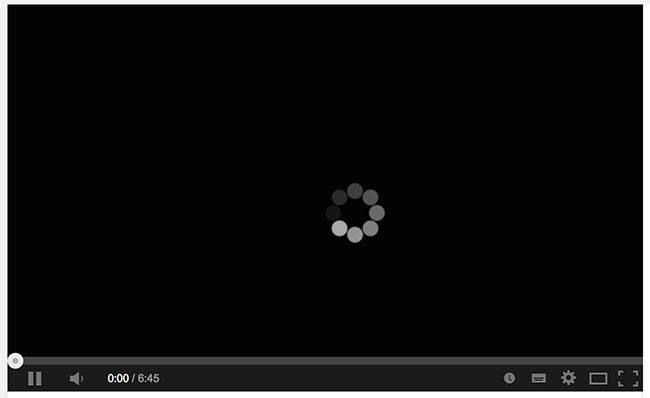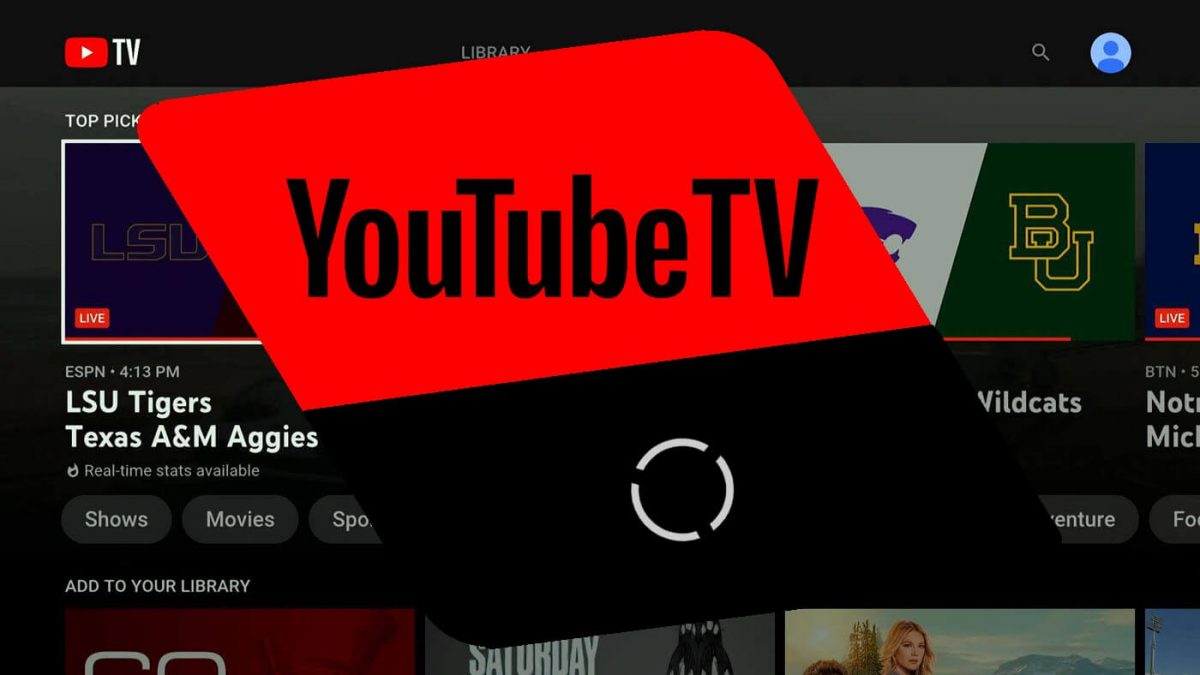YouTube TV has disrupted the traditional television landscape by offering an impressive range of channels and on-demand content. However, nothing puts a damper on a cozy binge-watching session quite like buffering issues. If you've ever found yourself staring at that loading icon while your favorite show is just about to reveal its latest twist, you know the frustration it brings. Understanding the nuances behind buffering is essential to keeping your streaming experience smooth and enjoyable. Let’s delve into the common causes of those annoying interruptions and explore how you can fix them!
Common Causes of Buffering Issues

Buffering occurs when your device has trouble loading or streaming content efficiently. Several factors can contribute to this frustrating phenomenon. Here are some of the most common culprits:
- Slow Internet Speed: A sluggish internet connection is usually the primary suspect. To stream YouTube TV comfortably, a minimum speed of 10 Mbps is recommended. Anything less might lead to frequent buffering. You can run a speed test on sites like Speedtest.net to check your current speed.
- Network Congestion: If multiple devices are connected to your network—computers, smartphones, tablets, or even smart home devices—they can hog the bandwidth that YouTube TV needs, causing buffering. This often happens during peak internet usage hours.
- Router Problems: Your Wi-Fi router plays a crucial role in your streaming experience. Outdated firmware or misconfigured settings can lead to connectivity issues. Sometimes, simply rebooting the router can work wonders.
- Device Compatibility: Older devices or those with outdated software may struggle to keep up with high-definition streaming. Ensure your streaming device, whether it's a smart TV, streaming stick, or mobile device, is updated and compatible with YouTube TV.
- Background Applications: If you have applications running in the background, they could be using valuable system resources and bandwidth. Closing unnecessary apps can help enhance your streaming performance.
Recognizing these common causes is the first step toward troubleshooting and ultimately enhancing your YouTube TV streaming experience. Once you identify what might be causing the buffering, you can take actionable steps to resolve the issue and enjoy seamless viewing.
3. Tips to Optimize Your Internet Connection

Buffering during your favorite shows can be a real buzzkill, so let’s dive into some practical tips to optimize your internet connection for a smoother YouTube TV experience. Here’s what you can do:
- Check Your Internet Speed: Before anything, it’s good to know if your internet is up to snuff. You can use sites like Speedtest.net to measure your speed. Ideally, you should aim for at least 25 Mbps for seamless streaming.
- Use a Wired Connection: If possible, connect your device directly to the router with an Ethernet cable. Wired connections are generally faster and more reliable than Wi-Fi, reducing the chances of buffering.
- Position Your Router Wisely: If you have to stick with Wi-Fi, ensure your router is centrally located in your home. Avoid placing it near walls or metal objects that can interfere with signal strength.
- Limit Bandwidth Usage: Check if other devices are hogging the bandwidth while you’re streaming. You might want to pause downloads or limit devices like smart TVs, gaming consoles, or even phones while watching.
- Upgrade Your Internet Plan: Sometimes, the only solution is to upgrade your internet package. Speak to your provider about higher-speed options if buffering continues to be a recurring issue.
By following these tips, you can significantly enhance your internet connection, leading to fewer interruptions and a more enjoyable viewing experience!
4. Adjusting YouTube TV Settings for Better Performance
Now that your internet connection is in tip-top shape, let’s turn our attention to YouTube TV settings. Tweaking these can make a world of difference in your streaming experience:
- Change Streaming Quality: YouTube TV allows you to adjust the video quality based on your connection. To change this, go to Settings > Video Quality and select a lower quality like 720p if you’re facing buffering issues.
- Pre-load Broadcasts: For live TV, enabling pre-loading can help. This setting allows the app to load ahead, cutting down on buffering when switching between channels.
- Clear Cache and Data: Sometimes, accumulated cache can slow things down. Head to your device settings, find YouTube TV, and clear the cache. This action can refresh your app’s performance.
- Close Unnecessary Applications: Ensure that background apps are closed while streaming. Background apps can use resources and bandwidth, causing your stream to lag.
- Device Compatibility: Ensure you’re using a device that’s compatible and updated. Sometimes, older devices may not support the latest updates, which can affect streaming quality.
With these adjustments, you can optimize how YouTube TV functions, paving the way for smoother streaming sessions filled with entertainment instead of interruptions!
5. Using Devices and Hardware to Reduce Buffering
Buffering can be a real mood killer when you're trying to enjoy your favorite show on YouTube TV. One way to combat this issue is by optimizing the devices and hardware you use for streaming. Here’s how you can enhance your streaming experience with the right setup:
- Upgrade Your Router: A modern router can significantly improve your streaming experience. Look for a router that supports Wi-Fi 6, which offers better speed and performance, especially in households with multiple devices connected.
- Position Your Router Wisely: The placement of your router can make a huge difference. Keep it elevated and in a central location away from walls and obstructions. This allows for better signal coverage throughout your home.
- Use Ethernet Cables: Whenever possible, connect your streaming device directly to the router with an Ethernet cable. Wired connections are typically faster and more reliable than Wi-Fi.
- Update Your Devices: Ensure that your streaming device, whether it's a smart TV, gaming console, or streaming stick, is running the latest software. Updates can enhance performance and fix existing bugs.
- Check for Interference: Other electronic devices, like microwaves or cordless phones, can interfere with your Wi-Fi signal. Try to keep these devices away from your router.
By upgrading your hardware and optimizing your network setup, you can create a smoother streaming experience that minimizes those pesky buffering issues!
6. Checking for YouTube TV Outages
If you’re experiencing buffering issues with YouTube TV, it’s possible that the problem isn’t on your end at all. Sometimes, the platform itself may be undergoing maintenance or facing technical difficulties. Here’s how you can check for YouTube TV outages:
- Visit Outage Detection Websites: Websites like DownDetector or Is It Down Right Now? provide real-time information on whether YouTube TV is experiencing outages. These platforms allow users to report their problems, creating a timestamp for when issues arise.
- Check Social Media: Platforms like Twitter often have insightful real-time updates. Searching for hashtags like #YouTubeTV or #YouTubeTVdown can lead you to conversations about current issues affecting users.
- Check Official Status Page: YouTube sometimes releases updates on outages through their official Google Workspace Status Dashboard. This can be a reliable source for upcoming maintenance schedules or known issues.
By staying informed about any potential outages, you can determine whether the buffering issues are due to your internet connection or are a wider problem affecting all users. If you find out there’s an outage, all you can do is wait it out while they fix it!
Fix YouTube TV Buffering Issues and Enhance Your Streaming Experience
YouTube TV has become a popular choice for cord-cutters, offering a vast array of channels and on-demand content. However, buffering issues can significantly disrupt your viewing experience. Below are several strategies to help you fix buffering problems and enjoy uninterrupted streaming.
1. Check Your Internet Speed
Buffering often occurs due to inadequate internet speed. To ensure smooth streaming:
- Perform a speed test using tools like Speedtest.net.
- For YouTube TV, a minimum speed of *3 Mbps is required for standard quality and 25 Mbps for 4K streaming.
2. Optimize Your Network
Improving your network can help reduce buffering:
- Use a wired connection: Ethernet connections are generally faster and more stable than Wi-Fi.
- Reduce interference: Place your router away from walls and electronic devices.
- Limit device usage: Disconnect devices not in use that may be consuming bandwidth.
3. Manage Streaming Settings
You can also adjust YouTube TV's streaming quality:
- Navigate to Settings > Playback*.
- Choose a lower resolution if you're experiencing persistent buffering.
4. Update Your Devices
Ensure that your streaming device and app are updated to the latest software version, as updates often include improvements that enhance performance.
5. Restart Your Devices
Sometimes a simple reboot can do wonders. Try restarting your streaming device, modem, and router to refresh the connection.
Conclusion
By following these tips, you can effectively address YouTube TV buffering issues, ensuring a smoother and more enjoyable streaming experience.










